In the growing landscape of electric vehicles (EVs), the Mercedes EQA and Tesla Model 3 stand out as two prominent options that represent a clash of luxury and technological innovation. Both vehicles have much to offer; however, they cater to different preferences and driving experiences. In this comparison, we will dissect their technical specifications, performance metrics, and innovative features that set them apart.
Mercedes EQA vs Tesla Model 3 – Which car suits you better?
Everyday use, family trips or long-distance drives – here’s where the differences show.
Discover whether Mercedes EQA or Tesla Model 3 fits your lifestyle better.
Design and Body Type
The Mercedes EQA is styled as a compact SUV, offering a more elevated driving position and a rugged presence that appeals to those who appreciate utility alongside luxury. With a length of 4,463 mm, a width of 1,834 mm, and a height that varies from 1,608 to 1,613 mm, it is designed to combine elegance with practicality.
On the other hand, the Tesla Model 3 is a sleek hatchback, exuding a sporty aesthetic with its aerodynamic lines. Measuring 4,720 mm in length, 1,850 mm in width, and 1,440 mm in height, the Model 3 offers a more low-slung, dynamic appearance that appeals to performance-oriented drivers.
Powertrain and Performance
When it comes to powertrains, both vehicles are equipped with electric engines that provide impressive performance figures. The Mercedes EQA offers variants with power outputs ranging from 190 HP to a robust 292 HP, with torque figures peaking at 520 Nm. The acceleration times are commendable, with the fastest EQA variant sprinting from 0 to 100 km/h in just 6 seconds.
In contrast, the Tesla Model 3 raises the stakes with power outputs ranging from 283 HP to a staggering 460 HP. With torque reaching up to 723 Nm, it outpaces the EQA considerably, achieving 0 to 100 km/h acceleration as fast as 3.1 seconds in its Performance variant.
Electric Range and Efficiency
Efficiency is crucial when it comes to EVs, and both the EQA and Model 3 excel in this area. The Mercedes EQA showcases an electric range of up to 561 km, depending on the variant, with energy consumption as low as 14.4 kWh/100km, making it a commendable choice for daily use.
However, the Tesla Model 3 takes efficiency a step further with an impressive range of up to 702 km in its Long Range version, with the most efficient variant consuming only 12.5 kWh/100km. This efficiency can translate into longer trips with less frequent charging, giving the Model 3 a distinct edge in range anxiety.
Interior and Technology
The cabin of the Mercedes EQA focuses on luxury and comfort, boasting a refined interior design with high-quality materials and ample space for up to five passengers. The EQA features a digital dashboard with a large central display for infotainment, alongside advanced driver-assistance systems that enhance safety and convenience.
On the flip side, the Tesla Model 3 boasts a minimalist interior dominated by a central touchscreen that controls nearly all vehicle functions. While some may find this unconventional, it underscores Tesla's commitment to simplifying user interfaces. The Model 3 is also equipped with advanced autopilot capabilities, providing a unique driving experience with semi-autonomous features.
Charging Infrastructure and Practicality
Both the Mercedes EQA and Tesla Model 3 support fast charging capabilities; however, Tesla's Supercharger network remains unparalleled, offering convenience for long-distance travelers. The Model 3's battery capacity ranges from 62 kWh to 79 kWh, ensuring versatility in urban and highway charging scenarios.
The EQA, with battery capacities of 66.5 kWh and 70.5 kWh, is also competitive, but it may not have the extensive charging infrastructure of Tesla. Nevertheless, it reasonably accommodates everyday driving needs with a trunk capacity of up to 340 liters, while the Tesla Model 3 offers a superior 594 liters, providing practicality for more substantial cargo loads.
Conclusion
The choice between the Mercedes EQA and Tesla Model 3 ultimately hinges on personal preferences and driving needs. The Mercedes EQA offers luxury and utility with a well-crafted design, appealing to those who prioritize comfort and style in their electric SUV. In contrast, the Tesla Model 3 leads with unparalleled efficiency, cutting-edge technology, and outstanding performance that caters to driving enthusiasts.
Whether you lean toward the elegance of the EQA or the innovation of the Model 3, both vehicles represent the future of automotive excellence in the electric arena.
Here’s where it gets real: The technical differences in detail
Costs and Efficiency:
Price and efficiency are often the first things buyers look at. Here it becomes clear which model has the long-term edge – whether at the pump, the plug, or in purchase price.
Tesla Model 3 has a distinct advantage in terms of price – it starts at 34300 £, while the Mercedes EQA costs 44200 £. That’s a price difference of around 9960 £.
In terms of energy consumption, the advantage goes to the Tesla Model 3: with 13.20 kWh per 100 km, it’s barely noticeable more efficient than the Mercedes EQA with 14.40 kWh. That’s a difference of about 1.20 kWh.
As for range, the Tesla Model 3 performs clearly perceptible better – achieving up to 750 km, about 189 km more than the Mercedes EQA.
Engine and Performance:
Under the bonnet, it becomes clear which model is tuned for sportiness and which one takes the lead when you hit the accelerator.
When it comes to engine power, the Tesla Model 3 has a distinct edge – offering 460 HP compared to 292 HP. That’s roughly 168 HP more horsepower.
In acceleration from 0 to 100 km/h, the Tesla Model 3 is convincingly quicker – completing the sprint in 3.10 s, while the Mercedes EQA takes 6 s. That’s about 2.90 s faster.
In terms of top speed, the Tesla Model 3 performs evident better – reaching 262 km/h, while the Mercedes EQA tops out at 160 km/h. The difference is around 102 km/h.
There’s also a difference in torque: Tesla Model 3 pulls distinct stronger with 660 Nm compared to 520 Nm. That’s about 140 Nm difference.
Space and Everyday Use:
Whether family car or daily driver – which one offers more room, flexibility and comfort?
Both vehicles offer seating for 5 people.
In curb weight, Tesla Model 3 is to a small extent lighter – 1822 kg compared to 2045 kg. The difference is around 223 kg.
In terms of boot space, the Tesla Model 3 offers significantly more room – 594 L compared to 340 L. That’s a difference of about 254 L.
When it comes to payload, Mercedes EQA clearly perceptible takes the win – 425 kg compared to 333 kg. That’s a difference of about 92 kg.
Who wins the race?
The Tesla Model 3 proves to be wins the duel decisively and therefore becomes our DriveDuel Champion!
Tesla Model 3 is the better all-rounder in this comparison.
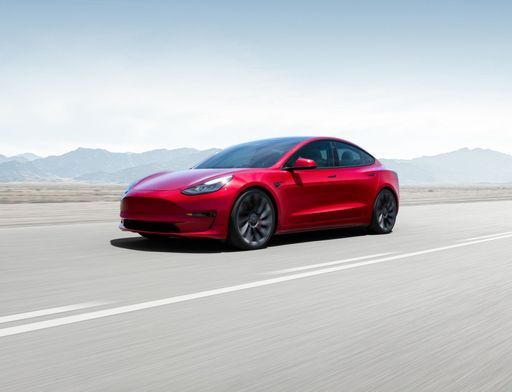 @ Tesla, Inc.
@ Tesla, Inc.
Tesla Model 3
Mercedes EQA
The Mercedes EQA slips into the electric crossover ranks with the brand’s familiar luxury polish, offering a quiet, fuss-free drive that feels perfectly at home in the city or on a country escape. Inside it’s neatly finished and tech-forward, projecting grown-up refinement even if it plays things a bit safe for anyone chasing outright excitement.
details @ Mercedes-Benz Group Media
@ Mercedes-Benz Group Media
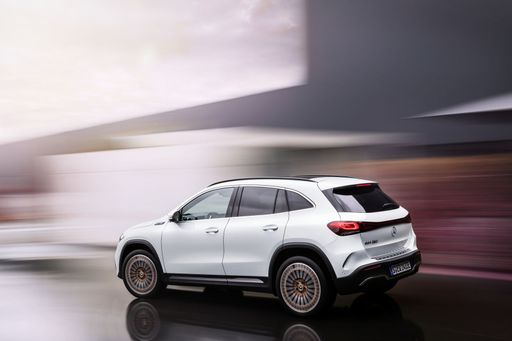 @ Mercedes-Benz Group Media
@ Mercedes-Benz Group Media
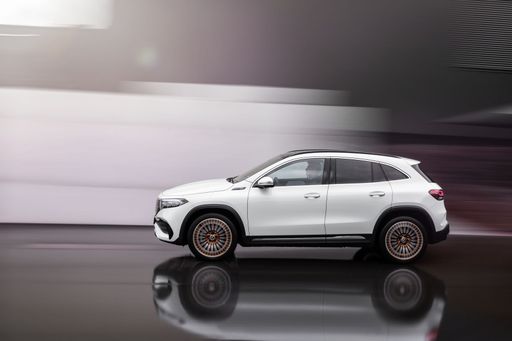 @ Mercedes-Benz Group Media
@ Mercedes-Benz Group Media
 @ Mercedes-Benz Group Media
@ Mercedes-Benz Group Media
Tesla Model 3
The Tesla Model 3 slices through daily commuting with a silent, confident shove that makes petrolheads reassess their life choices, while its minimalist cabin feels more like a slick gadget gallery than a traditional car interior. For buyers after a fuss-free, tech-forward electric with plenty of grin factor and low running drama, it’s hard to beat—just don't be surprised when the car updates itself overnight.
details @ Tesla, Inc.
@ Tesla, Inc.
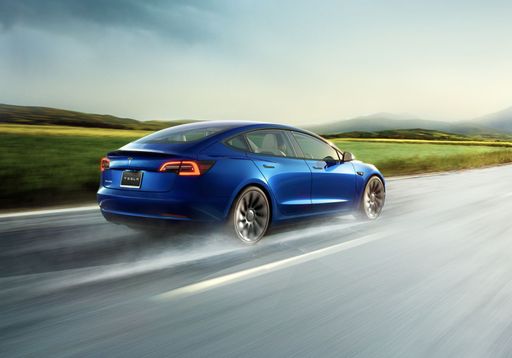 @ Tesla, Inc.
@ Tesla, Inc.
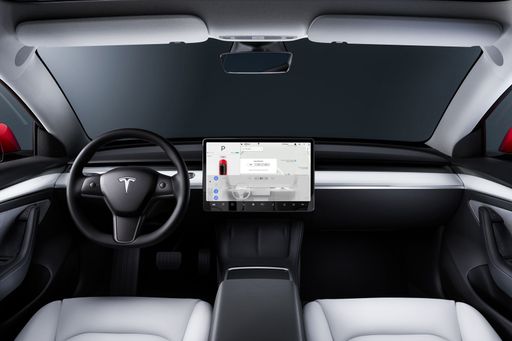 @ Tesla, Inc.
@ Tesla, Inc.
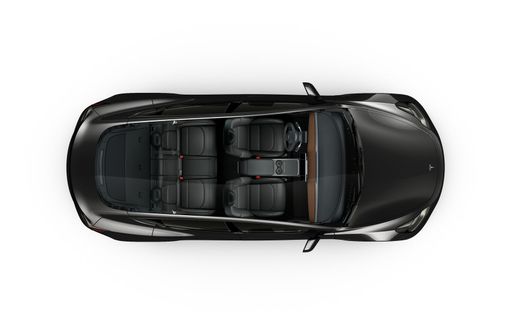 @ Tesla, Inc.
@ Tesla, Inc.
 @ Mercedes-Benz Group Media
@ Mercedes-Benz Group Media
|
 @ Tesla, Inc.
@ Tesla, Inc.
|
|
|
|
Costs and Consumption |
|
|---|---|
|
Price
44200 - 57400 £
|
Price
34300 - 50100 £
|
|
Consumption L/100km
-
|
Consumption L/100km
-
|
|
Consumption kWh/100km
14.4 - 16.9 kWh
|
Consumption kWh/100km
13.2 - 16.7 kWh
|
|
Electric Range
476 - 561 km
|
Electric Range
550 - 750 km
|
|
Battery Capacity
70.50 kWh
|
Battery Capacity
64.5 - 83 kWh
|
|
co2
0 g/km
|
co2
0 g/km
|
|
Fuel tank capacity
-
|
Fuel tank capacity
-
|
Dimensions and Body |
|
|---|---|
|
Body Type
SUV
|
Body Type
Sedan
|
|
Seats
5
|
Seats
5
|
|
Doors
5
|
Doors
4
|
|
Curb weight
2045 - 2115 kg
|
Curb weight
1822 - 1929 kg
|
|
Trunk capacity
340 L
|
Trunk capacity
594 L
|
|
Length
4463 mm
|
Length
4720 - 4724 mm
|
|
Width
1834 mm
|
Width
1850 mm
|
|
Height
1608 - 1613 mm
|
Height
1431 - 1440 mm
|
|
Max trunk capacity
1320 L
|
Max trunk capacity
-
|
|
Payload
425 kg
|
Payload
303 - 333 kg
|
Engine and Performance |
|
|---|---|
|
Engine Type
Electric
|
Engine Type
Electric
|
|
Transmission
Automatic
|
Transmission
Automatic
|
|
Transmission Detail
Reduction Gearbox
|
Transmission Detail
Reduction Gearbox
|
|
Drive Type
Front-Wheel Drive, All-Wheel Drive
|
Drive Type
Rear-Wheel Drive, All-Wheel Drive
|
|
Power HP
190 - 292 HP
|
Power HP
283 - 460 HP
|
|
Acceleration 0-100km/h
6 - 8.6 s
|
Acceleration 0-100km/h
3.1 - 6.1 s
|
|
Max Speed
160 km/h
|
Max Speed
201 - 262 km/h
|
|
Torque
385 - 520 Nm
|
Torque
420 - 660 Nm
|
|
Number of Cylinders
-
|
Number of Cylinders
-
|
|
Power kW
140 - 215 kW
|
Power kW
208 - 338 kW
|
|
Engine capacity
-
|
Engine capacity
-
|
General |
|
|---|---|
|
Model Year
2024 - 2025
|
Model Year
2025
|
|
CO2 Efficiency Class
A
|
CO2 Efficiency Class
A
|
|
Brand
Mercedes-Benz
|
Brand
Tesla
|
Is the Mercedes EQA offered with different drivetrains?
Available configurations include Front-Wheel Drive or All-Wheel Drive.
The prices and data displayed are estimates based on German list prices and may vary by country. This information is not legally binding.
